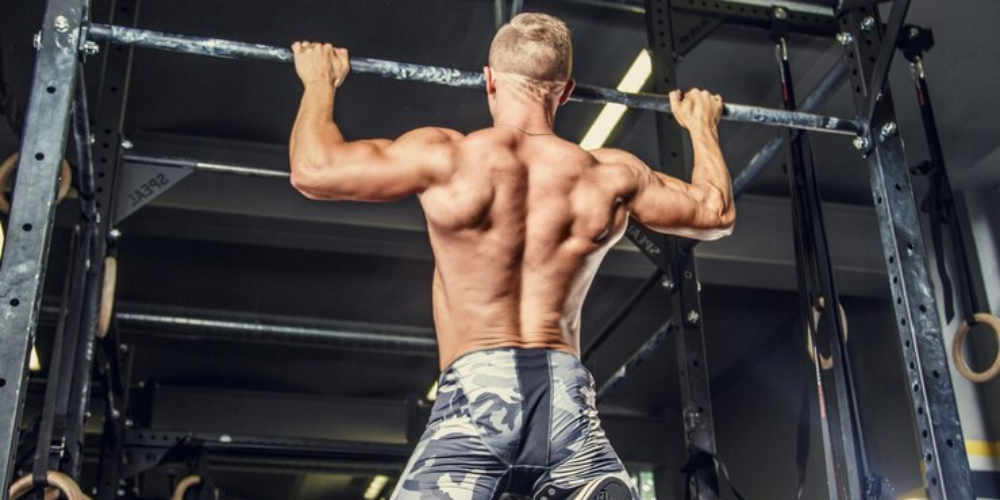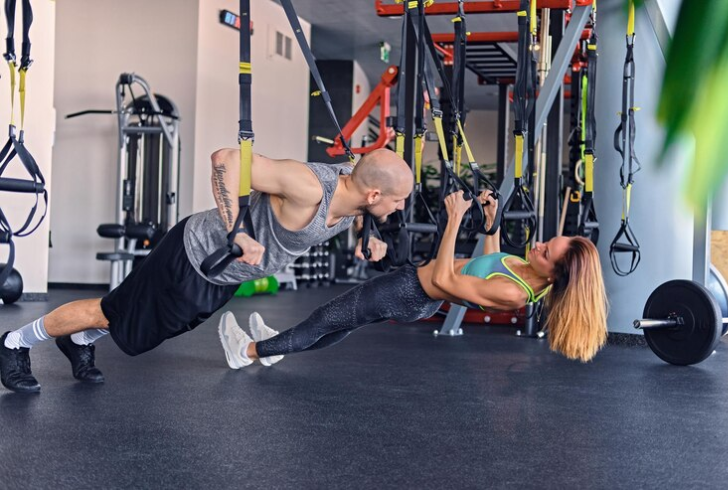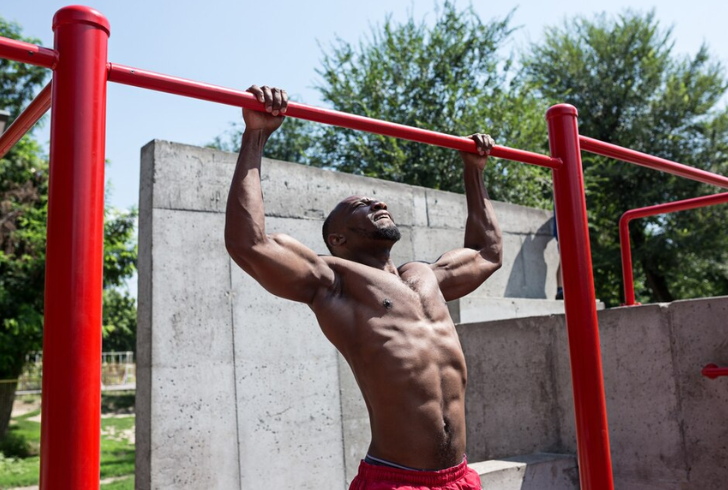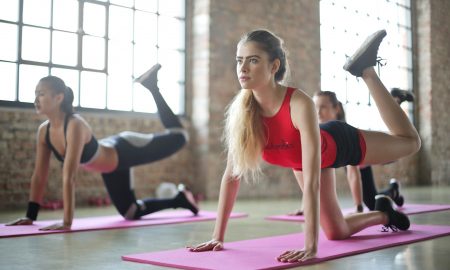
Best Calisthenics Back Workout Routine for Building Muscle

When it comes to developing a strong, defined back, calisthenics offers a potent alternative to traditional weightlifting. Often overshadowed by the popularity of dumbbells and barbells, calisthenics deserves more recognition for its effectiveness in sculpting the upper body. By leveraging your body weight, you can achieve impressive back strength and muscle definition without ever touching a weight. Curious about how?
Read on to explore the best calisthenics back workout routines, discover essential exercises, and learn how to maximize your gains.
Understanding Calisthenics Exercises
Calisthenics involves using your body weight as resistance to build strength and muscle. By adjusting grips, angles, and body positioning, you can vary the intensity and target different muscle groups. The beauty of calisthenics lies in its versatility and accessibility. All you need is a bit of space and minimal equipment to get started.
Do You Need Equipment for a Calisthenics Back Workout?

Freepik | fxquadro | Calisthenics uses body weight and resistance bands, with intensity adjusted by grip or added weights.
While calisthenics minimizes the need for equipment, having a few key pieces can enhance your workout. For an effective back workout, consider these essentials:
- Pull-Up Bar – Ideally, a high bar from which you can hang freely. If space is limited, a lower bar will still work, though the exercises will be more challenging.
- Shorter Bar – A bar set about 3 feet off the ground is useful for various row exercises. Many parks have such bars, making them an excellent resource.
- Rope or Climbing Object – A rope, tree, or pole can add variety and intensity to your workouts.
- Sturdy Object for Foot Rest – This can be used for elevated exercises to increase resistance.
- Resistance Band – Optional, but it can intensify your workouts and help with progression.
If you don’t have access to these specific items, get creative with household alternatives or explore our recommended calisthenics equipment for your home gym.
The Best Calisthenics Back Workout Routine
For optimal results, perform these calisthenics back workouts 2 to 3 times a week. The key is to ensure sufficient volume, which is crucial for muscle growth.
Here’s a breakdown of two effective workout sessions:
Calisthenics Back Workout Session A
- Pull-Ups (Harder Progression) – 5 sets, RPE 8
- Chin-Ups – 5 sets, RPE 8
- Australian Rows – 5 sets, RPE 8
Calisthenics Back Workout Session B
- Chin-Ups (Harder Progression) – 5 sets, RPE 8
- Pull-Ups (Easier Progression) – 5 sets, RPE 8
- Australian Rows (Overhand Grip) – 5 sets, RPE 8
Progressions & Rep Schemes
Adapt your workouts based on your fitness level. Aim for 5 sets of each exercise, adjusting the reps as needed. Here are some rep schemes to consider:
- 1,1,1,1,1
- 1,1,2,1,1
- 1,2,1,2,1
- 1,1,3,1,2
As you progress, increase the number of reps or “max out” during the final set to challenge yourself further.
Benefits of Calisthenics Back Workouts
Beyond building muscle, calisthenics back workouts offer several advantages:
- Improved functional strength – Real-life movements are often bodyweight-based.
- Enhanced body control and coordination – Calisthenics demands precise movements.
- Increased flexibility- Many calisthenic exercises promote flexibility.
- Time efficiency – No need for gym equipment; workouts can be done anywhere.
By dedicating time to a calisthenics back workout routine, you’ll not only strengthen your physique but also develop a well-rounded level of fitness.
Top Calisthenics Back Exercises & Variations

Freepik | master1305 | Pull-ups, performed with an overhand grip, are a cornerstone exercise for developing a powerful back.
1. Australian Row
The Australian row, or inverted row, is a fundamental calisthenics exercise for the back. It mimics a bent-over row but with your bodyweight as resistance.
How to Perform:
- Grab a low bar with an overhand grip, hands slightly wider than shoulder-width.
- Position your body so it is extended at an angle, with feet out in front and torso parallel to the ground.
- Start in a dead hang, pull your body towards the bar, and focus on squeezing your shoulder blades together.
- Variations include wide grip, one-arm rows, and underhand rows to target different muscle groups.
2. Chin-Ups
Chin-ups are performed with an underhand grip, engaging the biceps and upper back more intensely.
How to Perform:
- Grip the bar with palms facing you and hands shoulder-width apart.
- Pull your body up until your chin clears the bar, focusing on bringing the bar to your chest.
- Variations include close grip, chin-ups to one side, and commando chin-ups to enhance strength and endurance.
3. Pull-Ups
Pull-ups involve an overhand grip and are renowned for their effectiveness in building back strength.
How to Perform:
- Grab the bar with hands slightly wider than shoulder-width.
- Pull your body up, driving your elbows downward to engage the lats.
- Variations include wide grip, one-arm, and finger pull-ups to further challenge your muscles.
Calisthenics offers a versatile and effective way to develop a powerful back using just your body weight. By incorporating these exercises into your routine, you can build strength, improve athleticism, and achieve a well-defined back.
Remember to tailor the exercises and progressions to your fitness level, and embrace the creativity of bodyweight training. With consistent effort and the right techniques, you might just find yourself preferring calisthenics over traditional weightlifting for back development.
More inFitness
-
`
Princess Charlotte Steps Up with a Royal Reminder for Prince George
Princess Charlotte continues to captivate royal watchers with her poised demeanor and sense of responsibility. At just nine years old, she...
November 29, 2024 -
`
Deal With Lower Back Pain With These Yoga for Sciatica Exercises
Lower back pain can disrupt daily life, especially when caused by sciatica. This condition occurs when the sacral nerve, located at...
November 29, 2024 -
`
8 Expert Tips for Staying Healthy in the Winter
Staying healthy in the winter requires a proactive approach, as cold weather can challenge immune strength and mental well-being. With a...
November 21, 2024 -
`
Concussion in Children: What Parents Need to Know for Safe Recovery
A concussion in children, especially from contact sports, requires careful attention to symptoms and recovery. A concussion, or mild traumatic brain...
November 15, 2024 -
`
Can Hypochlorous Acid Transform Your Skin Routine and Banish Acne?
Hypochlorous acid is rapidly gaining attention in the skincare world thanks to its potential to fight acne and support clear skin....
November 8, 2024 -
`
How Calisthenics Can Help Improve Your Overall Fitness?
Calisthenics is not a mere workout. It is a fitness revolution. Unlike weightlifting or running, calisthenics uses only your body weight...
November 2, 2024 -
`
10 Must-Have Foods for Kidney Health You Need in Your Diet
Our kidneys are powerhouse organs, working constantly to remove waste, balance fluids, and regulate essential minerals like sodium and potassium. These...
October 26, 2024 -
`
The Les Mills Fitness Festival in Riyadh | An Immersive Fitness Experience
The Les Mills Fitness Festival is coming to Riyadh. It is set to be a fitness experience like no other! On...
October 19, 2024 -
`
How Healthy Are Oats Actually? A Closer Look
Oats have become a staple in many breakfast bowls and snack bars. But are oats healthy? The short answer is yes!...
October 11, 2024















You must be logged in to post a comment Login